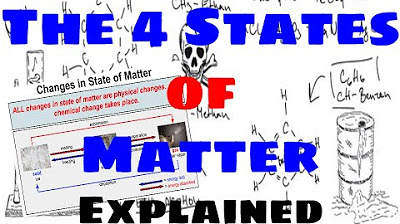08 Basic Grammar dari Nol, Perubahan Kata Kerja Karena Subject || Mr. Anwar
Summary
TLDRIn this educational video, Mr. Anwar guides English beginners through the rules of forming sentences with third-person singular subjects. He explains the use of verbs ending in 's', 'sh', 'ch', 'ss', and 'y', and provides clear instructions on creating positive, negative, and interrogative sentences. Emphasizing key grammar points, such as adding 's' or 'es' in positive sentences and using 'does' for negative and question forms, Mr. Anwar offers practical examples and helpful tips. This lesson is designed to enhance understanding of third-person singular verb conjugation and improve sentence construction.
Takeaways
- 😀 Positive sentences with third-person singular subjects require adding 'S' or 'ES' to the verb.
- 😀 Verbs that end in 'SH', 'CH', 'SS', 'O', or 'Y' need 'ES' added to form the third-person singular (e.g., 'washes', 'goes').
- 😀 Negative sentences with third-person singular subjects use 'does not' or 'doesn't', and the verb stays in its base form (no 'S' or 'ES').
- 😀 Interrogative sentences with third-person singular subjects start with 'does' and use the base form of the verb (e.g., 'Does he eat?').
- 😀 When creating a negative or interrogative sentence, the verb doesn’t need an 'S' because the auxiliary verb 'does' already carries the tense.
- 😀 The third-person singular subjects include 'he', 'she', 'it', and names of people (e.g., 'Udin', 'my mom').
- 😀 The verb 'eat' changes to 'eats' in a positive third-person singular sentence (e.g., 'She eats bala-bala').
- 😀 Common mistakes to avoid include forgetting to add 'S' or 'ES' to verbs in positive sentences (e.g., 'He eat' is incorrect).
- 😀 When asking a question, 'does' is placed at the beginning (e.g., 'Does she eat bala-bala?').
- 😀 Understanding when to add 'S' or 'ES' is key to forming grammatically correct third-person singular sentences.
Q & A
What is the main focus of this video?
-The main focus of this video is to explain how to form positive, negative, and interrogative sentences with third-person singular subjects in English, specifically adding the correct verb endings.
What happens to the verb when the subject is in the third person singular?
-When the subject is third-person singular (e.g., he, she, it, Udin), the verb must be modified by adding an **-s** or **-es** at the end.
Can you give an example of a positive sentence with a third-person singular subject?
-Sure! An example would be: 'He eats bala-bala' or 'She eats bala-bala.' The verb 'eat' takes an 's' when the subject is third-person singular.
Why is 'My mother wash the dishes' incorrect?
-'My mother wash the dishes' is incorrect because the verb 'wash' should be modified with 'es' when the subject is third-person singular. The correct sentence is 'My mother washes the dishes.'
How do you form negative sentences with third-person singular subjects?
-To form negative sentences with third-person singular subjects, you use the auxiliary verb **does** or its contracted form **doesn't**, followed by the base form of the main verb. For example: 'He doesn't eat bala-bala.'
Why does the verb not need to take an 's' in negative sentences with third-person singular subjects?
-The verb does not take an 's' in negative sentences because the auxiliary verb **does** already carries the action. For example, in the sentence 'He doesn’t eat bala-bala,' the verb 'eat' remains in its base form.
How do you form questions with third-person singular subjects?
-To form questions, you start the sentence with **does** followed by the subject and the base form of the verb. For example: 'Does he eat bala-bala?'
What happens when the verb ends in 'sh', 'ch', or 'o' in third-person singular sentences?
-When the verb ends in 'sh', 'ch', 'o', or certain other endings, you add **-es** instead of just **-s**. For example: 'My mother washes the dishes.'
Why do we add **-es** to verbs like 'wash' but just **-s** to verbs like 'eat'?
-We add **-es** to verbs like 'wash' because these verbs end in 'sh', 'ch', or 'o', which require an extra syllable to form the correct pronunciation. For simpler verbs like 'eat', we just add **-s**.
What should learners remember when forming sentences with third-person singular subjects?
-Learners should remember to add **-s** or **-es** to the verb in positive sentences, use **does** or **doesn't** in negative sentences, and start questions with **does** followed by the base form of the verb.
Outlines

此内容仅限付费用户访问。 请升级后访问。
立即升级Mindmap

此内容仅限付费用户访问。 请升级后访问。
立即升级Keywords

此内容仅限付费用户访问。 请升级后访问。
立即升级Highlights

此内容仅限付费用户访问。 请升级后访问。
立即升级Transcripts

此内容仅限付费用户访问。 请升级后访问。
立即升级浏览更多相关视频

The Four States of Matter - Explained

Lab Equipment - Explained

3. Gr 11 Life Sciences - Population Ecology - Theory 3 Mark Recapture Method

4. Gr 11 Life Sciences - Population Ecology - Worksheet 1

PENJASKES KELAS X - SOFTBALL

Introduction to Culture [AP Human Geography Review Unit 3 Topic 1]

Menentukan Mr ( massa molekul relatif )
5.0 / 5 (0 votes)
